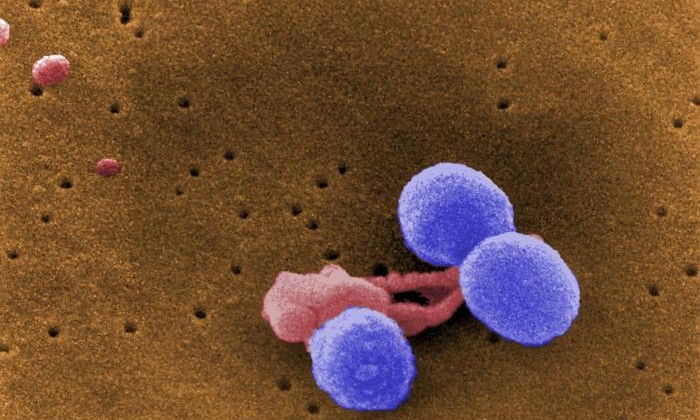Harmful bacteria, also known as pathogenic bacteria, are microorganisms that can cause illness, disease, and infection in humans, animals, and plants. These bacteria possess virulent properties that enable them to colonize host organisms, evade the immune system, and produce toxins that harm the body. While many bacteria are harmless or even beneficial, harmful bacteria can pose significant health risks and may require medical intervention to treat.
Some examples of harmful bacteria include Escherichia coli (E. coli), Salmonella, Staphylococcus aureus (Staph), Streptococcus pyogenes (Strep), Clostridium difficile (C. diff), and Vibrio cholerae (Cholera). These bacteria can cause a wide range of infections, including foodborne illnesses, respiratory infections, skin infections, urinary tract infections, and gastrointestinal infections.
Harmful bacteria can be transmitted through various routes, including contaminated food and water, direct contact with infected individuals, airborne droplets, and contact with contaminated surfaces. Poor hygiene practices, improper food handling, and inadequate sanitation can contribute to the spread of pathogenic bacteria.
The symptoms of bacterial infections vary depending on the type of bacteria and the site of infection but may include fever, diarrhea, vomiting, abdominal pain, coughing, sore throat, skin rash, and fatigue. In severe cases, bacterial infections can lead to complications such as sepsis, organ failure, and death.
Preventing the spread of harmful bacteria requires implementing proper hygiene practices, such as frequent handwashing, proper food handling and preparation, disinfection of surfaces, and vaccination against bacterial infections where available. Additionally, the appropriate use of antibiotics and antimicrobial agents can help treat bacterial infections and prevent the development of antibiotic resistance, a growing global health concern.

Streptococcus pneumoniae, one of the harmful bacteria
To know more about harmful bacteria, let’s take a look at these 35 interesting facts about harmful bacteria.
- Ubiquitous Presence: Harmful bacteria are found in virtually every environment on Earth, from soil and water to the human body and even extreme environments like deep-sea vents and polar ice caps.
- Diverse Species: There are estimated to be over 10,000 species of harmful bacteria, each with its own unique characteristics, habitats, and pathogenic potential.
- Colonization of Hosts: Harmful bacteria have evolved mechanisms to colonize and persist in host organisms, often adhering to mucosal surfaces such as the respiratory tract, gastrointestinal tract, and skin.
- Virulence Factors: Pathogenic bacteria possess virulence factors such as toxins, adhesins, and capsules that enable them to invade host tissues, evade immune responses, and cause disease.
- Antibiotic Resistance: Many harmful bacteria have developed resistance to antibiotics due to overuse and misuse of these medications, leading to the emergence of multidrug-resistant bacterial infections.
- Biofilm Formation: Bacteria can form biofilms, complex communities of bacteria encased in a matrix of extracellular polymeric substances, which provide protection against antibiotics and immune responses.
- Role in Disease: Harmful bacteria are responsible for a wide range of infectious diseases in humans, including tuberculosis, cholera, pneumonia, urinary tract infections, and foodborne illnesses.
- Food Spoilage: Certain bacteria, such as those belonging to the genera Bacillus and Clostridium, can spoil food by producing enzymes and toxins that degrade food quality and cause unpleasant odors and flavors.
- Zoonotic Potential: Many harmful bacteria are zoonotic, meaning they can be transmitted from animals to humans, posing risks to public health through contact with infected animals or consumption of contaminated animal products.
- Pathogenesis Mechanisms: Harmful bacteria employ various mechanisms to cause disease, including toxin production (e.g., botulinum toxin, diphtheria toxin), tissue invasion (e.g., Salmonella, Shigella), and immune evasion (e.g., Mycobacterium tuberculosis).
- Diverse Modes of Transmission: Harmful bacteria can be transmitted through various routes, including direct contact with infected individuals, ingestion of contaminated food or water, inhalation of airborne droplets, and contact with contaminated surfaces.
- Role in Dental Health: Bacteria such as Streptococcus mutans and Porphyromonas gingivalis are associated with dental caries (cavities) and periodontal disease (gum disease), respectively, highlighting the importance of oral hygiene in preventing bacterial infections.
- Gut Microbiota Imbalance: Disruption of the balance of bacteria in the gut microbiota, often due to factors such as antibiotic use or poor diet, can lead to dysbiosis, which is associated with various health conditions, including inflammatory bowel disease and obesity.
- Respiratory Infections: Harmful bacteria such as Streptococcus pneumoniae, Haemophilus influenzae, and Mycobacterium tuberculosis are major causes of respiratory infections, including pneumonia, bronchitis, and tuberculosis.
- Nosocomial Infections: Some harmful bacteria, such as Staphylococcus aureus and Pseudomonas aeruginosa, are common causes of healthcare-associated infections (nosocomial infections) in hospitals and other healthcare settings.
- Waterborne Diseases: Water contaminated with harmful bacteria such as Escherichia coli, Vibrio cholerae, and Legionella pneumophila can cause waterborne diseases such as cholera, typhoid fever, and Legionnaires’ disease.
- Fecal-Oral Route: Many bacterial infections, particularly gastrointestinal infections, are transmitted through the fecal-oral route, where bacteria from fecal matter are ingested via contaminated food, water, or hands.
- Role in Chronic Diseases: Emerging research suggests that certain harmful bacteria may play a role in the development of chronic diseases such as cardiovascular disease, diabetes, and autoimmune conditions through mechanisms such as chronic inflammation and immune dysregulation.
- Bacterial Endocarditis: Infective endocarditis, a serious bacterial infection of the heart valves, can be caused by bacteria such as Streptococcus viridans and Staphylococcus aureus, often entering the bloodstream through dental procedures or intravenous drug use.
- Intracellular Pathogens: Some harmful bacteria, including Mycobacterium tuberculosis and Salmonella enterica, are intracellular pathogens that can survive and replicate inside host cells, evading immune responses and causing persistent infections.
- Vector-Borne Diseases: Certain harmful bacteria, such as Borrelia burgdorferi (the causative agent of Lyme disease) and Rickettsia rickettsii (the causative agent of Rocky Mountain spotted fever), are transmitted to humans through the bites of infected arthropod vectors such as ticks and fleas.
- Role in Cancer: Chronic infections with certain bacteria, such as Helicobacter pylori (linked to stomach ulcers and gastric cancer) and some strains of human papillomavirus (linked to cervical cancer), are associated with an increased risk of cancer development.
- Diagnostic Methods: Various laboratory techniques, including bacterial culture, polymerase chain reaction (PCR), and serological tests, are used to diagnose bacterial infections and identify the causative pathogens.
- Bacterial Classification: Bacteria are classified into different groups based on various criteria, including their shape (cocci, bacilli, spirilla), staining properties (Gram-positive, Gram-negative), and metabolic characteristics (aerobic, anaerobic).
- Role in Biotechnology: Some bacteria, such as Escherichia coli and Bacillus subtilis, are used in biotechnology and industrial processes for the production of enzymes, antibiotics, and other valuable products.
- Biological Warfare: Certain harmful bacteria, including Bacillus anthracis (the causative agent of anthrax) and Yersinia pestis (the causative agent of plague), have been weaponized for use in biological warfare and bioterrorism.
- Beneficial Bacteria: Not all bacteria are harmful—many bacteria play essential roles in ecosystems, such as nitrogen fixation by Rhizobium bacteria in soil, and in human health, such as probiotic bacteria in the gut microbiota.
- Host Immune Responses: The immune system plays a crucial role in defending against bacterial infections, with mechanisms including phagocytosis by immune cells, production of antibodies, and activation of inflammatory responses.
- Emerging Infectious Diseases: The emergence of new bacterial pathogens, antimicrobial resistance, and global travel and trade contribute to the ongoing threat of emerging infectious diseases caused by harmful bacteria.
- One Health Approach: Addressing the complex challenges posed by harmful bacteria requires a One Health approach, integrating human health, animal health, and environmental health perspectives to prevent, detect, and control bacterial infections.
- Global Impact: Bacterial infections have a significant global impact on public health, economic productivity, and social well-being, particularly in low- and middle-income countries with limited access to healthcare and sanitation.
- Preventive Measures: Preventing bacterial infections involves strategies such as vaccination, hand hygiene, safe food handling practices, water sanitation, and antimicrobial stewardship to reduce the spread of antibiotic resistance.
- Treatment Options: Antibiotics are commonly used to treat bacterial infections, although the rise of antimicrobial resistance underscores the importance of judicious antibiotic use and the development of alternative treatment strategies.
- Public Health Surveillance: Surveillance systems monitor bacterial infections, antimicrobial resistance patterns, and outbreaks to inform public health policies, interventions, and strategies for disease control and prevention.
- Collaborative Efforts: Addressing the complex challenges posed by harmful bacteria requires collaboration among governments, healthcare providers, researchers, industry stakeholders, and communities to develop effective interventions, promote antimicrobial stewardship, and mitigate the impact of bacterial infections on human health and well-being.
Harmful bacteria represent a significant challenge to human health and well-being, causing a wide range of infectious diseases and posing ongoing threats due to factors such as antimicrobial resistance, emerging pathogens, and global interconnectedness. However, it’s essential to recognize that not all bacteria are harmful, and many play crucial roles in ecosystems and human health. Addressing the complex challenges posed by harmful bacteria requires a multifaceted approach, including preventive measures such as vaccination and sanitation, judicious antibiotic use, surveillance systems to monitor infections and resistance patterns, and collaborative efforts across sectors and disciplines. By working together to understand, prevent, and control bacterial infections, we can mitigate their impact and safeguard public health for future generations.





